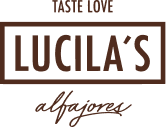Yerba mate (pronounced yehr-buh mah-tay) tastes like a tea and hits you like a coffee—and yet, it's technically neither. If you're looking for a boost of energy that doesn't come from an espresso bean, look no further than this South American super-beverage made from the steeped leaves and twigs of an indigenous plant, which has been providing locals with a natural pick-me-up for centuries. Herbal yerba mate tea contains roughly as much caffeine as coffee, about 80 milligrams per cup.

There's a time-honored ritual around the consumption of yerba mate... it requires a mate (dried gourd), a bombilla (a special straw for drinking that filters out the leaves), and a thermos for transporting the hot water. One designated person—called the cebador—fills the mate about two-thirds full with the leaves and adds a little bit of warm water to release the flavors. The cebador then inserts the bombilla into the mate at an angle to ensure the straw doesn't get plugged up and tops it off with hot water (never boiling, as that will burn the leaves). The gourd gets passed around, and refilled every time is a person's turn. Each fill up with water will give about 4-5 sips. (Tip: Never use the bombilla to stir; this is considered very impolite!)
This elaborate process certainly isn't the only way people drink yerba mate. Just as with our morning coffee, you can prepare yerba mate like a regular cup of tea with tea bags. As for food pairings, there are no hard and fast rules when it comes to yerba mate, but it's not uncommon to see pastries, most notably Alfajores! or crackers served alongside the drink.
Lucila grew up in Argentina sharing this communal beverage and alfajores with friends and family everyday. Treat yourself to this traditional Argentine pairing!



